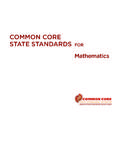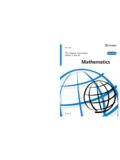Transcription of ACC Resource Guide for Teachers
1 2010 AACA ugmentative and Alternative CommunicationAugmentative and Alternative CommunicationRESOURCE GUIDERESOURCE GUIDETEACHERSTEACHERS forforSmita Worah, , Consultant, State Education Resource Center, Middletown, CTSarah Douglas, , Doctoral Candidate, Pennsylvania State University David McNaughton, , Professor, Pennsylvania State University Pam Kennedy, Manager, AAC-RERC Writers BrigadeAugmentative and Alternative Communication (AAC) includes all forms of communication that can be used to share ideas, make friends, and express needs and wants. Th e use of AAC by people with complex communication needs (CCN) increases social interaction, school performance, and a feeling of can be used to help people with CCN say and write whatever they want.
2 AAC systems must be personalized to refl ect individual interests and some students with autism, cerebral palsy, Down syndrome, and other disabilities, speech may not fulfi ll all of their communication needs. For these students with complex communication needs (CCN), the use of Augmentative and Alternative Communication (AAC) can have important benefi ts (Blackstone, 1993, 2008, 2009). Th ere are a wide range of AAC techniques available, including: Picture, symbol, alphabet, and word boards Signs and gestures Speech-generating devices (including specialized computer systems) As with any assistive technology used in a classroom, Teachers will need to know how to help their students use AAC eff ectively and effi ciently. Th is Guide provides an introduction to the ways students can use AAC to participate in classroom activities.
3 It also describes the variety of resources available to Connecticut Teachers working with students who would benefi t from the use of AAC. One place Connecticut educators and families can turn to for support is the State Education Resource Center (SERC), a nonprofi t agency funded primarily by the Connecticut State Department of Education. SERC provides professional development and information dissemination in the latest research and best practices to educators, service providers, and families throughout the state, as well as job-embedded technical assistance and training within schools, programs, and districts. One of the topics for which SERC provides statewide training and on-site technical assistance is AAC.
4 SERC is also conducting AAC research and developing AAC resources, both in print and on the Web, for educators and related service professionals. See the back page for contact information for SERC and other Connecticut e use of AAC systems can support participation for students at any agein a wide range of academic and social activities (Beukelman & Mirenda, 1998). AAC?AAC?What is What is Th e Picture Communication Symbols 1981 2009 by Mayer-Johnson LLC. All Rights Reserved Worldwide. Used with permission. Boardmaker is a trademark of Mayer-Johnson order to participate in classroom activities, students need a way to ask and answer questions, provide information, interact with peers, and communicate. If a student has diffi culty using speech, the student s individualized education program (IEP) team should consider the use of AAC to support communication.
5 Even students who use limited speech might also use AAC systems to clarify their message when their speech is not understood. It is important that students with complex communication needs have an opportunity, as other students do, to communicate and to participate in a wide range of activities at school. Sara is a young woman studying rehabilitation services at college. She has cerebral palsy and uses a DynaVox Vmax (speech-generating communication device) to communicate, and also to write. Music is one of Sara s passions -- she has performed using her AAC system at cultural, sporting, and political events. To view a video clip of Sara, go to: learn more about Sara s musical talent, visit her Web site at: Other students may have very little speech and use their AAC system for much of their communication:AAC?
6 AAC?Why useWhy useFrom GOOD NIGHT, GORILLA by Peggy Rathmann, copyright (c) 1994 Peggy Rathmann. Used by permission of Putnam s Sons, A Division of Penguin Young Readers Group, a Member of Penguin Group (USA) Inc., 345 Hudson Street, New York, NY 10014. All rights who have CCN can start using AAC from a very early age. Storybooks can be programmed onto communication devices to help them read and talk about the book. More examples of how to support communication with young children are available at: be used? be used?AACAACHow can How can Sara s storySara s storyPeople use diff erent ways to communicate, including speech, facial expressions, and gestures. For students with CCN, a wide variety of AAC techniques are available to support communication (Beukelman & Mirenda, 1998).
7 Most people use a range of techniques to meet diff erent needs at diff erent times. For example, while waving hello is an appropriate greeting, individuals with CCN will need access to more specifi c vocabulary (perhaps using a word board or speech-generating device) to participate in a science , symbol, alphabet, Picture, symbol, alphabet, and word boardsand word boardsTh e use of communication boards with pictures, symbols, the alphabet, and words can provide access to the vocabulary needed for students with CCN to participate in school, at home, and in the community. Th ere is an assortment of computer software available to help create picture and symbol boards. Below is an example of a picture display developed to support a student s participation in a discussion on plants.
8 Notice that this communication board not only provides a way for the student to answer questions, it also includes vocabulary to form questions. In developing a communication display, the goal is to provide students who have CCN with access to the vocabulary used by their speaking children who use AAC learn to read and write, they should have access to frequently used words. With the alphabet, they can spell the words they want. Supports for teaching students with CCN how to read and write are available at to read and write is especially important for children with CCN. Many people who use AAC make use of the alphabet to help clarify a spoken message ( , they make use of their speech and then spell a word if it is not understood), and they also make use of writing to prepare longer messages that may be diffi cult to speak aloud.
9 For these individuals, their communication boards may include a combination of frequently used words as well as an alphabet to spell words on the fl y. Th e Picture Communication Symbols 1981 2009 by Mayer-Johnson LLC. All Rights Reserved Worldwide. Used with permission. Boardmaker is a trademark of Mayer-Johnson can AAC be used? (cont.)How can AAC be used? (cont.)5 Signs and gesturesSigns and gesturesTh e use of signs and gestures allows students with CCN to quickly express frequently used words ( , yes, no, who, what, when, why, where, please, thank you). Some individuals may learn to make use of a large number of signs, while others may use a smaller number of signs in combination with other AAC individuals who are beginning communicators and who are just starting to learn how their own behavior can infl uence the behavior of others, it is especially important that the teacher provides appropriate opportunities for communication, and recognizes and encourages a student s communication attempts.
10 In these situations, it may be appropriate for the teacher to off er choices of actual physical objects and to encourage the individual with CCN to point toward the desired item. A speech and language pathologist can assist in developing communication opportunities for beginning communicators. More information on working with beginning communicators is available at Speech-generating devicesSpeech-generating devicesTh ere are many varieties of AAC devices available as communication supports. Th e availability of speech from a device is often very motivating to a student with CCN, and is especially useful for communicating in a group or with partners who are not familiar with other methods of ese devices typically contain both pre-programmed vocabulary as well as vocabulary important to that particular student ( , names of family members, vocabulary needed for school activities, etc.)





